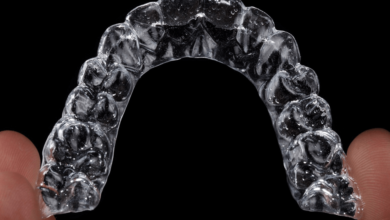Understanding Deep Tissue Massage: A Look at the Technique and Applications

Deep tissue massage is a highly focused therapeutic technique, set apart from other forms of bodywork by its intention to address the deeper layers of muscle and connective tissue. It’s distinguished by its use of firm pressure and slow, deliberate strokes, which are believed to be effective in releasing persistent muscle tension. The idea that deep tissue massage is an advanced form of traditional massage is a frequent one. However, it is a distinct practice that utilizes specific methods to reach the deeper musculature that often needs to be addressed in more superficial treatments.
While many relate “massage” to relaxation and leisure, deep tissue massage serves a more therapeutic purpose. Whether it’s to aid in the recovery process after an injury, ease the persistent pain that interferes with daily activities, or provide a remedy for the occupational hazards of sitting at a desk, deep tissue massage offers a wide range of applications. This method has advantages everyone may experience, from professional athletes to office workers, making it an invaluable resource in various contexts.
The Anatomy of Relief: How Deep Tissue Massage Affects Muscles
Muscular discomfort often stems from areas known as ‘trigger points’ or ‘muscle knots.’ These are spots of tension that may develop from various factors, including poor posture, repetitive use injuries, or the aftereffects of trauma to the body. When a muscle knot becomes too tight or causes pain, it implies an obstruction in blood flow and the build-up of waste products, potentially leading to inflammation and irritation. Deep tissue massage targets these areas, using sustained pressure to dissolve these knots and restore average circulation to the affected zones.
The therapeutic pressure of deep tissue massage also facilitates a natural process known as myofascial release. Fascia, the connective tissue that envelops and supports all of the body’s muscles, is being softened and stretched throughout this process. Loosening the fascia can dramatically improve the range of motion and flexibility, thereby aiding in the overall agility of the musculoskeletal system. As a result, those who receive regular treatments often report feeling less bound and more able to move freely.
Deep Tissue Massage and Pain Management
Finding long-lasting, effective relief from chronic pain can be an arduous task for those who experience it. Deep tissue massage, with its potential to address the underlying issues of muscular pain, offers a promising avenue. This type of therapy works particularly well for chronic diseases like fibromyalgia and lower back pain because it helps reduce the pain and stiffness that are associated with them. While the mechanisms are not entirely understood, it’s postulated that the focused pressure and manipulation of massage can interrupt pain signals between the body and the brain.
Massage has been demonstrated to decrease cortisol levels and raise levels of serotonin and dopamine, neurotransmitters that aid in mood regulation and stress reduction, in addition to its physiological advantages. It provides a multifaceted approach to pain, addressing the physical manifestations and contributing to emotional well-being. By integrating the practice into treatment plans, sufferers can sometimes reduce their dependence on pharmaceutical interventions, as supported by an article explaining the benefits of deep tissue massage concerning pain management.
Stress Reduction and Emotional Well-being
Mental and physical health are inextricably linked, each influencing the other. Anxiety levels can rise in response to physical discomfort, and stress can exacerbate pain and tension in the muscles. This vicious cycle may be attenuated by applying deep tissue massage, which encourages the body to enter a more relaxed state. Through the intentional and skilled manipulation of tight muscles, clients often report feelings of profound peace and relaxation, not dissimilar to the sensation of meditation or deep rest.
Beyond the more evident relaxation response elicited by the massage, the physical contact inherent in the therapeutic process can also foster an emotional connection and a sense of being nurtured. The hormonal stress induced by the firm massage technique facilitates the body’s resilience to stressors, providing clients an increased capacity to manage life’s challenges. Deep tissue massage is a cornerstone in seeking physical relief, emotional equilibrium, and resilience.
Customization in Deep Tissue Massages: Tailoring the Experience
Every individual’s body is unique, which means one person’s response to deep tissue massage can differ significantly from another’s. The level of pressure and techniques used can be modified to address specific client needs, aiming for a balance between therapeutic effectiveness and the client’s comfort threshold. The initial assessment is, therefore, a critical tool; therapists will customize the massage regimen by identifying areas of pain and tension and understanding the client’s medical history and lifestyle factors.
Some may worry that deep tissue massage has to be painful to be effective. However, experienced therapists understand that while some discomfort may be necessary to reach the deeper tissues, causing excessive pain is counterproductive. Communicating with the client throughout the session allows the therapist to adjust their approach and ensure that the massage remains within a tolerable intensity level while still delivering the benefits sought by the individual.
Contraindications and Safety Considerations for Deep Tissue Massage
It is crucial to remember that deep tissue massage is only sometimes suitable. Individuals with certain health conditions, such as acute injuries, blood clot risks, or severe osteoporosis, may not be suitable candidates. People with less severe conditions, including sensitive skin or a low pain threshold, should proceed cautiously and always speak with a healthcare professional before scheduling an appointment.
Professional massage therapists are trained to recognize these contraindications and to take histories that screen for potential risks. If there’s any doubt whether deep tissue massage is safe, therapists should advise clients to get clearance from their medical doctors. This cautious approach to client safety guarantees that the health advantages of deep tissue massage are realized without jeopardizing the client’s well-being and contributes to the preservation of confidence in the therapeutic relationship.
Athletic Performance and Recovery: Deep Tissue Massage’s Role in Sports
Sports enthusiasts and professionals can benefit from deep tissue massage in their training regimens. Any physical training program must include muscular recovery because neglecting to treat muscle stiffness and tightness can result in injury and poor performance. After an intense workout, well-being and attention to deep tissue massage on overused muscles can alleviate tension, enhance recovery, and prepare the body for future activities.
Deep tissue massage has been linked to enhanced athletic performance and recovery benefits. When athletes receive treatments that increase their range of motion, they can perform at a higher level without exerting too much. By incorporating systematic massage sessions into their routine, athletes better equip themselves to meet the challenges presented by their sport, ultimately optimizing their potential.
The Long-Term Effects of Deep Tissue Massage Therapy
When contemplating any therapeutic intervention, it’s prudent to consider the short-term results and long-term implications. Deep tissue massage’s accumulative effects can contribute significantly to a person’s health. Regular engagement with deep-tissue massage therapy has been associated with sustained health improvements, including regulated blood pressure and improved sleep quality. This could correlate with decreased risks of chronic diseases and enhanced longevity.
Research into these potential long-term benefits is ongoing. Still, preliminary evidence suggests that the technique may positively impact health markers for quite some time after a session. Exploring the longitudinal benefits of deep tissue massage brings a fascinating new perspective to this therapeutic approach, elevating it beyond simple symptom treatment and making it a possible factor in overall health.
The Training and Expertise of Professional Massage Therapists
The ability and education of the practitioner significantly impact the quality of deep-tissue massage. Unlike more general forms of massage, deep tissue work requires an in-depth knowledge of human anatomy, a precise technique, and a nuanced touch. Therapists often undertake rigorous training programs focusing on these specialized skills, client assessment procedures, safety measures, and ethical practices.
Those seeking the relief promised by deep tissue massage should trust certified professionals. Certification is necessary because it signifies the therapist’s commitment to their craft, adherence to industry standards, and ongoing education. When selecting a therapist, clients are encouraged to inquire about their qualifications, ensuring they work with someone capable of addressing their specific therapeutic needs.
Incorporating Deep Tissue Massage into Holistic Health Practices
Individuals often seek to integrate various modalities and practices to pursue a balanced, health-conscious lifestyle. Deep tissue massage is a versatile tool that complements other forms of health care. Pairing it with acupuncture can enhance energy flow throughout the body, while combining it with yoga can relieve muscle tension and increase flexibility. Nutritionists may advocate for massage as a component of a broader dietary and wellness plan, recognizing that stress reduction can impact digestive health and metabolism.
Collectively, these synergistic approaches illustrate how deep tissue massage can be woven into a larger tapestry of holistic health. It becomes not merely a treatment for aches and pains but part of an integrated strategy for maintaining and enhancing one’s overall well-being. With this comprehensive outlook, deep tissue massage is a valuable asset in the toolkit for anyone seeking optimal health.




